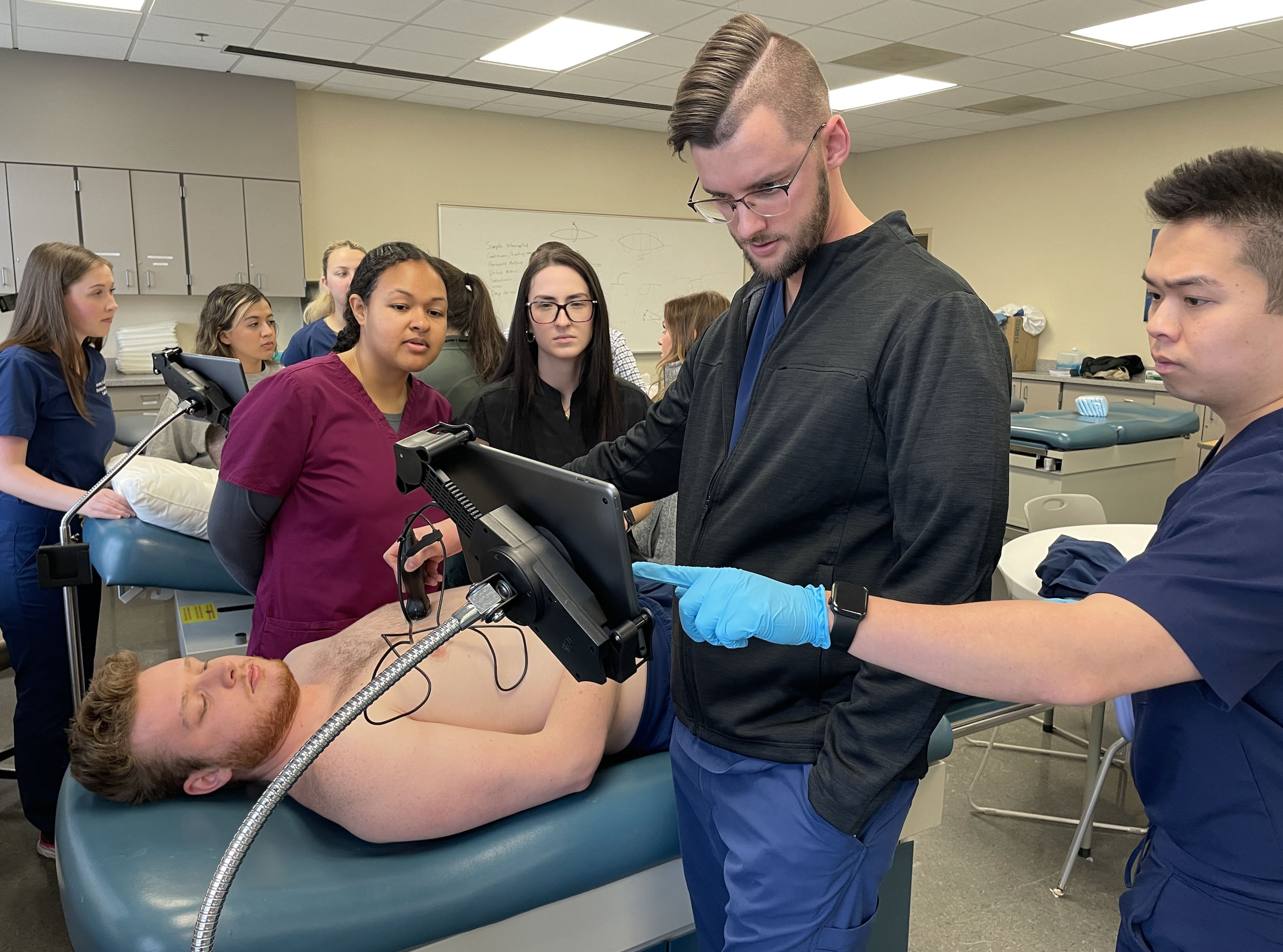PA Students Now Using Handheld Ultrasound in Classrooms
By Sara Pisoni
CHS Contributor
University of Kentucky Physician Assistant Studies students now have the unique opportunity of using mini-ultrasound machines to aid in integrated learning — handheld machines that can plug into any iPad or iPhone and allow for viewing of the ultrasound in real time on their devices.
Andy Williford, MSPAS, PA-C, is an assistant professor in the PA department who has always had an interest and focus on using ultrasound and bringing this teaching tool into UK classrooms.
Before he joined the faculty last year, Williford worked for 16 years in healthcare, starting as a physician assistant at Marshall Emergency Service Associates. There, he learned about ultrasound technology, something that is especially crucial for quick and accurate diagnoses. Mobile and handheld ultrasound machines remove the additional steps of sending a patient for a scan and waiting for it to be read, he says.
After leaving Marshall Emergency Service Associates, Williford and another practicing PA opened a primary care clinic where they integrated ultrasound into their everyday practice. This was very beneficial to have in their office, and with a little bit of education and training, Williford says it can become a part of any clinic. That is what he is focused on now — educating PA students on how to administer, read and use ultrasound technology to incorporate into their future.
It began as a voluntary interest group for students who wanted to learn the skill, but now it’s been integrated into all the clinical methods, exams and procedures the students are learning in class. Williford, a 2011 alumnus of the UK graduate PAS program, first worked with UK as a part-time lab assistant with the goal of teaching. Now, as a full-time faculty member, he wants to continue to integrate this education into the curriculum.

“Ultrasound education helps students become more desirable hires,” he said. “It’s a skill that not every clinician has and there aren’t many PA programs that teach this as part of their formal curriculum, so bringing that in sets UK PA apart from the field.”
He estimates that out of about 300 PA programs across the country, less than 30 percent have any ultrasound education at all, most of which he says is very brief. Williford also estimates that about only 10 percent of all PA programs incorporate a more comprehensive point of care ultrasound education like UK.
In the future, the practice could be more standard across all PA and doctor’s offices, he said. Being able to diagnose, treat, or guide procedures with an ultrasound machine that fits in your pocket could improve the efficiency of healthcare. With increased focus and training in this area, Williford believes that every student that enters the field will use the tool in their clinical practice.
“My desire for the future is that this becomes the new stethoscope,” he said.
In addition to educating students, Williford has a desire to provide this education for already practicing PAs, preceptors, and other physician’s offices. With help, time, and some additional resources he believes everyone can improve their efficiency.
Even though he’s only been teaching at UK for two years, Williford said he has a couple of students who have already utilized the technology on their clinical rotations. Some have completed ultrasound-guided procedures while others have performed ultrasounds on their patients and aided in diagnoses.
But the technology does not stop with PAs, he said. It can be used in every field.
“I’m just so excited to see other people in the College and other places understand what we’re doing here, and hopefully find ways to extend that to their own programs,” Williford said.